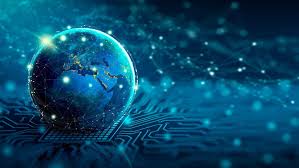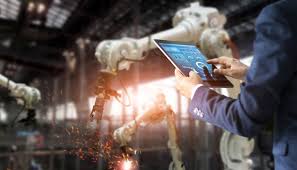The Definition of Current Technology
Technology is an ever-evolving field that encompasses the tools, systems, and methods used to solve problems and achieve goals. Current technology refers to the latest advancements and innovations that are shaping our world today.
Characteristics of Current Technology
Current technology is characterised by its cutting-edge nature, constantly pushing the boundaries of what is possible. It is often associated with terms such as artificial intelligence, machine learning, big data, Internet of Things (IoT), and blockchain.
Impact of Current Technology
The impact of current technology is profound and far-reaching. It has transformed industries, revolutionised communication, and changed the way we live and work. From self-driving cars to virtual reality experiences, current technology is reshaping our world in unprecedented ways.
Challenges and Opportunities
While current technology brings about numerous opportunities for progress and innovation, it also presents challenges such as data privacy concerns, cybersecurity threats, and ethical dilemmas. As we embrace the benefits of current technology, it is essential to address these challenges proactively.
The Future of Current Technology
Looking ahead, the future of current technology holds endless possibilities. Advancements in fields such as quantum computing, biotechnology, renewable energy, and space exploration promise to redefine what is achievable in the coming years.
Exploring the Advantages of Modern Technology: Efficiency, Innovation, Transformation, Opportunity, and Future Potential
- 1. Facilitates efficient problem-solving and goal achievement.
- 2. Drives continuous innovation and pushes the boundaries of what is possible.
- 3. Transforms industries, revolutionises communication, and enhances productivity.
- 4. Offers unprecedented opportunities for progress and growth in various sectors.
- 5. Shapes the future by redefining what is achievable and opening up new possibilities.
Challenges of Modern Technology: Obsolescence, Inequality, Privacy, and Dependency
1. Facilitates efficient problem-solving and goal achievement.
Current technology plays a pivotal role in facilitating efficient problem-solving and goal achievement across various domains. By harnessing the latest advancements in artificial intelligence, data analytics, and automation, organisations and individuals can streamline processes, make informed decisions, and overcome complex challenges with greater precision and speed. Whether it’s optimising supply chains, enhancing healthcare diagnostics, or improving customer experiences, current technology empowers us to tackle problems effectively and reach our objectives more efficiently than ever before.
2. Drives continuous innovation and pushes the boundaries of what is possible.
Current technology, with its ability to drive continuous innovation and push the boundaries of what is possible, stands as a beacon of progress in our rapidly evolving world. By constantly challenging existing norms and exploring new frontiers, current technology inspires creativity and ingenuity among individuals and industries alike. This relentless pursuit of innovation not only leads to groundbreaking discoveries but also fosters a culture of exploration and experimentation that fuels further advancements in technology, shaping a future where the possibilities are truly limitless.
3. Transforms industries, revolutionises communication, and enhances productivity.
Current technology, with its ability to transform industries, revolutionise communication, and enhance productivity, stands as a driving force behind the modern world’s progress. Industries across various sectors have been reshaped by technological advancements, leading to increased efficiency and innovation. Communication has been revolutionised through instant connectivity and global reach, enabling seamless interaction and collaboration on a scale never seen before. Moreover, the integration of technology into daily tasks has significantly boosted productivity levels, streamlining processes and empowering individuals and businesses to achieve more in less time.
4. Offers unprecedented opportunities for progress and growth in various sectors.
Current technology definition offers unprecedented opportunities for progress and growth in various sectors. With the continuous advancement of technology, industries such as healthcare, finance, education, and transportation are experiencing transformative changes that enhance efficiency, productivity, and innovation. From personalised medicine to fintech solutions and online learning platforms, current technology opens doors to new possibilities and empowers organisations to thrive in an increasingly digital world. Embracing these opportunities can lead to significant advancements and economic growth across diverse sectors, shaping a brighter future for society as a whole.
5. Shapes the future by redefining what is achievable and opening up new possibilities.
Current technology plays a pivotal role in shaping the future by redefining what is achievable and opening up new possibilities. Through constant innovation and advancements, technology has the power to push boundaries, break limitations, and introduce novel solutions to complex problems. By embracing current technology, we pave the way for transformative changes that have the potential to revolutionise industries, improve quality of life, and create opportunities that were previously unimaginable.
Rapid Obsolescence
Rapid obsolescence is a significant drawback of current technology. The fast-paced evolution of technology means that devices and systems can swiftly become outdated, creating a perpetual demand for upgrades. This cycle of obsolescence not only contributes to increased electronic waste but also places a financial burden on consumers who must frequently invest in new products to stay current. The constant need for upgrades can also lead to concerns regarding sustainability and resource depletion as older devices are discarded in favour of newer, more advanced models. Addressing the issue of rapid obsolescence is crucial for promoting a more sustainable and responsible approach to technological development.
Digital Divide
The digital divide represents a significant con of current technology definition, highlighting the unequal access to technological resources among various socio-economic groups. This disparity results in differences in knowledge, skills, and opportunities, further widening the gap between those who have easy access to technology and those who do not. As technology continues to advance rapidly, addressing the digital devide becomes crucial to ensure that everyone has equal opportunities to benefit from the innovations and progress of the digital age.
Privacy Concerns
Privacy concerns are a significant con associated with current technology. With the collection of extensive personal data becoming commonplace, there is a growing unease about potential privacy breaches and the misuse of this information by companies or governments. The ease with which data can be gathered and shared in the digital age has heightened worries about individuals’ privacy rights being compromised, highlighting the need for robust regulations and ethical practices to safeguard sensitive data in an increasingly interconnected world.
Dependency Issues
Society’s growing dependency on current technology poses a significant con due to the potential for over-reliance on automation, diminished critical thinking abilities, and susceptibility to system failures. As individuals and organisations rely more heavily on technology for everyday tasks and decision-making processes, there is a risk of complacency and reduced capacity for independent problem-solving. Moreover, an over-reliance on automated systems can make society more vulnerable to disruptions caused by system failures or cyber attacks, highlighting the importance of maintaining a balance between leveraging technology’s benefits and preserving essential cognitive skills.




What’s up, jjst wanted too say, I liked thiis post. It wass practical.
Keep on posting!
Thank you for your positive feedback on the post about the definition of current technology. We’re glad you found it practical and enjoyable. We’ll definitely keep posting more content like this. Stay tuned for future updates!